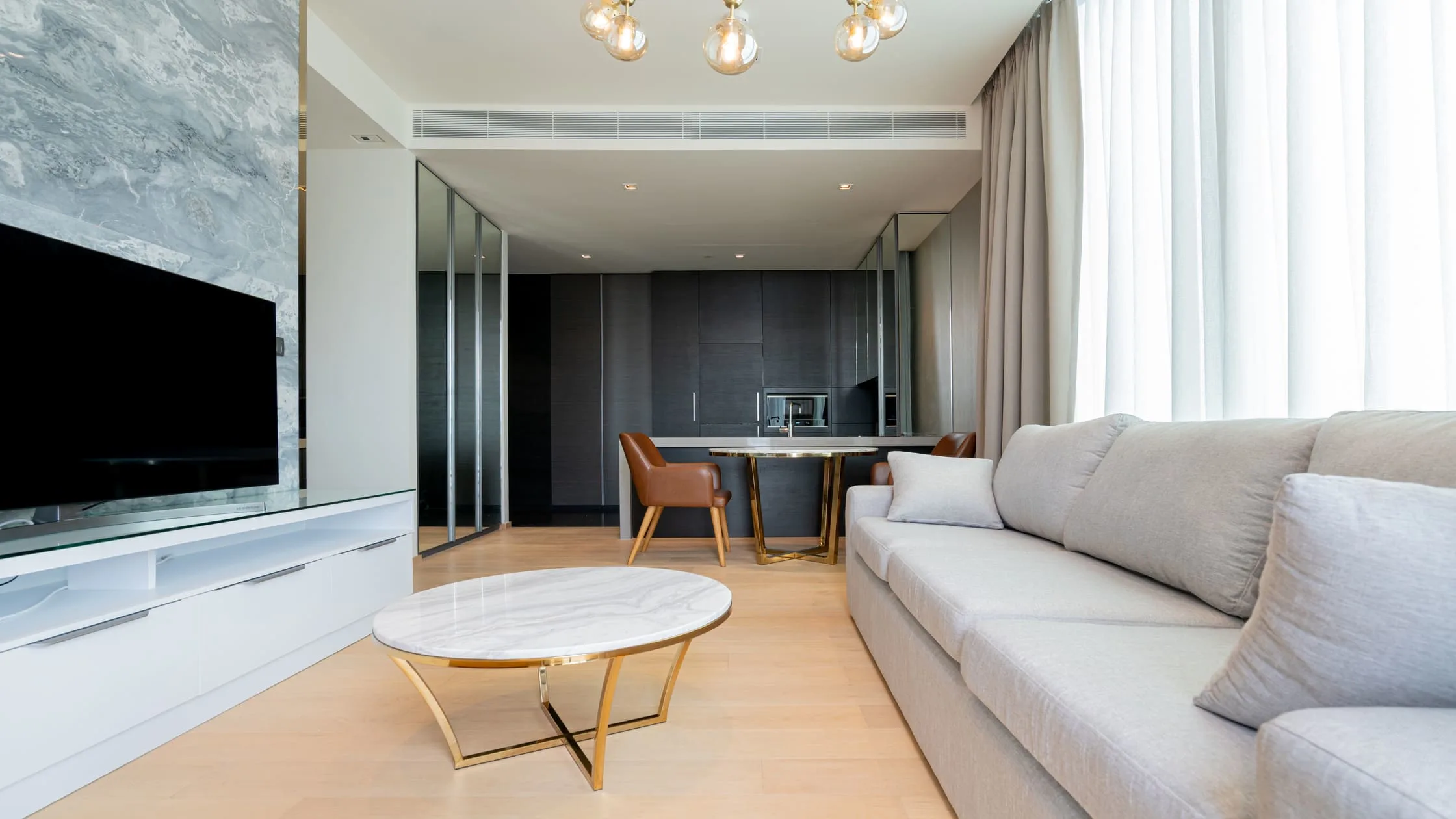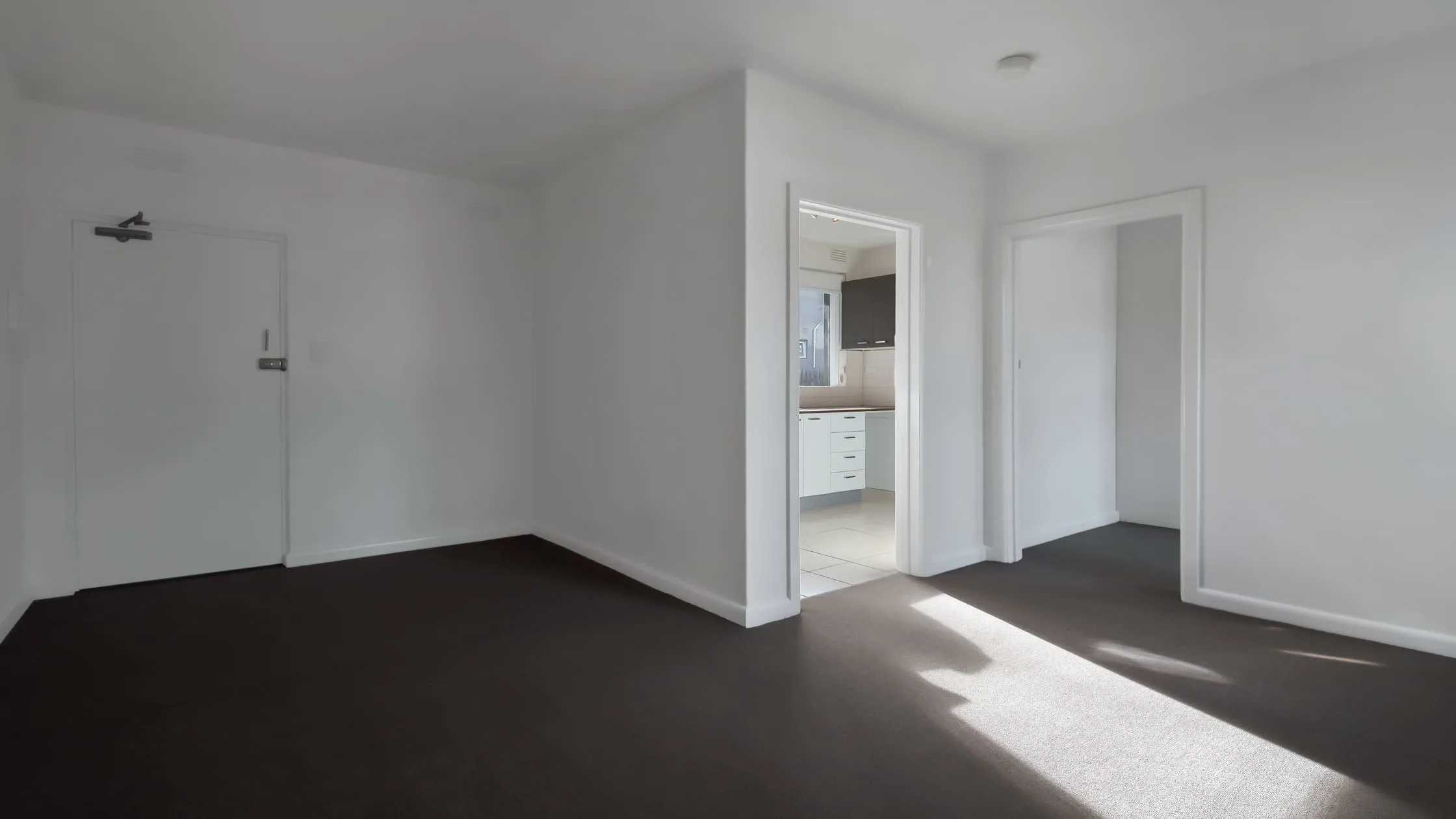The decision between furnished apartments vs unfurnished greatly affects your entire renting experience. Many people wonder, do apartments come furnished automatically? The answer is often tied to the lease length. We see that being fully furnished means a huge benefit for short-term renters.
An unfurnished place, however, requires high initial spending, such as buying a $1,500 couch. No need to worry any further, in this article, we will explore whether furnished apartments are worth it for your budget. More importantly, we will also detail the legal differences. LeaseRunner aims to simplify these complex choices for you.
Before signing a new agreement, renters should also prepare a list of essential legal inquiries, which is why we offer a guide to the best questions to ask before signing a lease. Let’s not wander around anymore and scroll down for more information now!

What Does “Furnished Apartment” Mean?
A furnished apartment is a rental that already includes furniture and key home items. Knowing what furnished apartments are helps set clear expectations before signing the lease. A fully furnished apartment should only require tenants to bring clothes and personal items.
The bedroom usually includes a bed, a mattress, and a dresser. The living room might offer a sofa, coffee table, and lamp. In the dining area, expect a table with chairs. The kitchen normally has basic appliances, such as a refrigerator, stove, and microwave, plus cookware and dishes for easy cooking. A fully furnished means even small things (like towels, curtains, or rugs) are ready to use.
In comparison, semi-furnished apartments include only large furniture, such as a bed or fridge. A renter may need to buy plates, sheets, or décor. This shows the furnish vs provide difference: landlords furnish big items but only provide basic appliances. For example, someone moving for a short‑term project may rent a semi‑furnished apartment to lower costs while keeping comfort.
Overall, furnished apartments work best for students, remote workers, or travelers. Opening the door to a ready home saves time, though rent can be higher for the extra convenience.
What Is an Unfurnished Apartment?

An unfurnished apartment generally includes only the basic structure. This means it has walls, floors, lighting, plumbing, and built-in kitchen cabinets or appliances. So, what does unfurnished mean? It means the unit does not come with movable furniture, such as beds, couches, or tables. Tenants must bring and arrange all their furniture and décor.
This option suits renters planning long stays who want full control over their space. For example, a family moving into a new city for several years might choose an unfurnished property to build a custom home environment. While the upfront cost is higher since they have to buy furniture, the monthly rent tends to be lower than furnished apartments.
Landlords who list unfurnished apartments tend to attract stable tenants with longer leases, reducing turnover issues. If you’re considering whether it is better to rent a house furnished or unfurnished, weigh your lifestyle and financial needs, as well as local rental demand, before deciding.
Furnished vs Unfurnished Apartments: Key Differences

The differences between furnished apartments vs unfurnished touch on costs, comfort, and upkeep. Understanding these key contrasts helps renters and landlords make smart choices.
1. Upfront Costs and Moving Expenses
Moving into a furnished apartment means no worries about buying or shipping furniture. For example, a nurse relocating for a job can save thousands by renting furnished housing. In contrast, an unfurnished apartment requires buying furniture, costing anywhere from $2,000 to $5,000. However, owning furniture spreads the cost out over years, balancing the expense for long-term tenants.
2. Rent Prices and Security Deposits
Typically, monthly rent runs 15% to 25% higher than an unfurnished place. City, amenities, and lease length affect rates, too. Landlords often ask for bigger security deposits on furnished units to cover furniture wear.
If you are a tenant, understanding the nature of these upfront costs, whether they are a move-in fee vs a security deposit, is critical to budgeting. Platforms like LeaseRunner help landlords stay within local deposit limits and simplify rent-related compliance and payment collection.
3. Flexibility and Lease Duration
Short-term leases often accompany furnished apartments, perfect for contractors or temporary employees. For stays beyond the typical 3-6 month corporate lease, exploring what a mid-term rental entails can offer greater savings and flexibility for furnished apartments.
Meanwhile, unfurnished rentals appeal to tenants seeking stability. Imagine a one-year worker opting for furnished convenience, while a first-time homeowner rents unfurnished to create a permanent space.
4. Personalization and Living Comfort
Furnishing restricts how much you can personalize. Renters inherit the landlord’s style rather than their own. Unfurnished apartments let renters pick paint, furniture style, and décor freely. This is where furnish vs provide stands out: landlords furnish for ease; tenants provide style.
5. Maintenance Responsibilities
The burden of maintenance responsibilities is also split differently. In an unfurnished apartment, the tenant is solely responsible for maintaining their own possessions. In a furnished unit, the landlord or hired property manager must maintain or replace the included furniture due to normal wear and tear.
As a landlord or property manager, knowing what a landlord can look at during an inspection is key to ensuring both the unit's condition and the tenant's privacy. However, the tenant is strictly responsible for any damage beyond normal use.
This means a move-out inspection on a fully furnished means a detailed inventory check, which requires the tenant to be meticulous. Our LeaseRunner tools help track and organize all lease details, including clauses on furniture responsibility.
To conclude, the choice between furnished and unfurnished rentals is a trade-off: tenants prioritize either the immediate convenience and flexibility of a furnished space or the lower long-term cost and freedom of personalization offered by an unfurnished unit.
Ultimately, understanding these key differences in upfront costs, monthly rent, and maintenance responsibility is essential for both tenants and landlords to secure a mutually beneficial and legally clear lease agreement.
Summary Table: Key Distinguishing Features Between Furnished Apartments vs Unfurnished
Furnished Apartments vs Unfurnished: Pros and Cons Summary

Choosing between furnished apartments vs unfurnished depends on many factors like lifestyle, budget, and length of stay. Both options have clear benefits and drawbacks. Understanding them helps renters and landlords find the best match.
Furnished Apartments' Pros and Cons
Furnished apartments offer convenience and instant comfort. They suit those needing quick moves or short stays. Here’s why:
Advantages of Furnished Apartments:
- Move-in ready with all furniture and essentials included.
- No need to buy or transport furniture, which cuts moving costs.
- Often come with stylish or upgraded décor, improving comfort.
- Easier for landlords to lease to short-term tenants in busy markets.
- High return potential on Airbnb or short-term rental platforms.
For instance, a remote worker relocating for six months rents a furnished downtown studio. The higher rent offsets their saved money and time.
Disadvantages of Furnished Apartments:
- Monthly rent and security deposits tend to be higher.
- Personalising the space is limited by landlord-owned furniture.
- Damage to furniture can cause disputes if the lease documentation is unclear.
- Not ideal for tenants planning long-term stays who want stability.
Unfurnished Apartments' Pros and Cons
Unfurnished apartments bring freedom but require effort and upfront costs. They fit tenants planning long stays who want customisation.
Advantages of Unfurnished Apartments:
- Usually lower monthly rent than furnished units.
- Full control to furnish and decorate as desired.
- Long-term tenants gain personal satisfaction in building their unique space.
Disadvantages of Unfurnished Apartments:
- Initial costs for furniture and appliances can be expensive.
- Moving bulky furniture is tiring and costly.
- Less attractive for short-term renters who prioritize convenience.
Understanding the pros and cons of furnished apartments vs unfurnished apartments empowers better rental decisions. Choose furnished for ease and short stays or unfurnished for freedom and long-term living.
Legal Considerations for Furnished and Unfurnished Rentals (U.S. Market)

Regulations shape lease structures and obligations. If you are a tenant asking do apartments come furnished or a landlord setting the terms, strict rules apply. Legal compliance is necessary for all U.S. rentals.
Federal Landlord-Tenant Regulations
Federal law sets standards for fair practices and habitability. Both furnished apartments and unfurnished units must follow the Federal Fair Housing Act (FHA). This act stops discrimination based on race, religion, or family status. For example, a landlord cannot refuse a qualified tenant just because they have children.
This is true whether the unit is empty or a fully furnished living space. Federal law also requires safety rules. Landlords must put in working smoke and carbon monoxide detectors in every unit. They must also follow lead-based paint rules for places built before 1978.
LeaseRunner includes disclosure templates that meet all these federal rules automatically. Compliance confirms that what is furnished apartments legally is, first and foremost, a safe home.
Security Deposit Limits by State (California, New York, Texas)
The security deposit is the clearest legal difference between furnished apartments vs unfurnished apartments. Landlords often charge more for furnished spaces. This covers the higher chance of damage to their personal property. To prepare for this, tenants should research how much a security deposit is for an apartment in their area to manage initial costs.
- California (CA): State law limits deposits. For unfurnished units, the cap is two times the monthly rent. For a furnished rental, the limit goes up to three times the monthly rent. If rent is $2,000, the unfurnished limit is $4,000. But the furnished limit can be $6,000.
- New York (NY): New York is stricter. The cap is only one month’s rent for both furnished and unfurnished apartments. The limit is the same. However, the landlord can deduct for furniture damage. This makes the initial inventory list very important.
- Texas (TX): Texas has no state-wide limit on deposit amounts. The landlord and tenant negotiate the terms. They must be clearly written in the lease. This freedom helps Texas landlords decide if it is better to rent a house furnished or unfurnished based on market needs, not deposit caps.
Knowing these limits helps landlords set fair and legal deposit prices.
Furniture Inventory and Maintenance Clauses
For furnished and semi-furnished apartments, a detailed furniture inventory is the most vital document. A properly furnished agreement must list every item included. It must note the item's condition at move-in. For example, the list should say, "One grey, three-seat sofa, left arm has a small tear." It should not just say "sofa."
Photos attached to the lease cut down on damage fights when the tenant moves out. Our platform lets you embed photo inventories with lease files. This makes proof easy.
The lease must also make maintenance responsibilities clear. The tenant pays for damage. The landlord pays for normal wear and tear. This helps show the difference between what a landlord must furnish vs provide upkeep for. If a sofa leg breaks because a tenant jumped on it, the tenant pays. If the sofa fabric wears out within two years, the landlord pays.
Insurance Requirements for Furnished Rentals
Both people need good insurance. Landlords must carry property protection. This covers damage to the building and its furniture. This is the owner's asset protection. Tenants should buy renters’ insurance. This policy covers two key things: the tenant’s personal items and liability.
The liability part protects the tenant if they damage the landlord's property by accident. For example, if they spill paint on the landlord's rug. This keeps claims transparent and balances who is responsible, no matter what unfurnished means for other items.
Tax Deductions and Depreciation of Furnished Assets
For landlords, offering a furnished apartment creates clear tax benefits. They can deduct depreciation for the furniture and appliances. Depreciation is a yearly deduction. It accounts for an asset losing value over time. For example, a $5,000 furniture set can be deducted over seven years.
Additional comments on asset classification and legal basis:
- Asset Classification: For tax purposes under the Modified Accelerated Cost Recovery System (MACRS), most rental furniture, appliances, and carpets are typically classified as 5-year property or 7-year property. Furniture is commonly classified as 7-year property. This classification determines the specific depreciation schedule used to recover the asset's cost.
- Expensing: Landlords who qualify (i.e., whose rental activity rises to the level of a "trade or business") may also be able to deduct the entire cost of personal property, such as furniture, in the year it is placed in service, using either bonus depreciation or the Section 179 deduction.
- Legal Basis (IRS): For a detailed breakdown of these rules, including depreciation schedules and Section 179 limitations, consult IRS Publication 527, Residential Rental Property (which discusses general depreciation) and IRS instructions for Form 4562 (which is used to claim both depreciation and Section 179).
This annual deduction lowers the landlord's taxable rental income. This financial gain is a big part of deciding if furnished apartments are worth it for the property owner. Landlords may also consider working with a private landlord who manages their own property instead of a property management company. Using LeaseRunner’s expense tracking makes recording these deductions easier. We suggest comparing this with market costs.
We suggest comparing this with market costs, and for landlords, checking out resources on how much rent should be charged and other necessary expenses you should consider.
Furnished vs Unfurnished — Which Option Fits Your Lifestyle?

The best choice between furnished apartments vs unfurnished depends on your life, job type, and budget flexibility. Matching your rental choice to your needs is important. This section helps you decide if a pre-furnished space fits your current lifestyle.
Short-Term vs Long-Term Rental Scenarios
Your lease length is the key factor. Consider a student taking a semester abroad. They only stay for four months. They should choose a furnished rental. This choice lets them avoid buying a bed and a desk just for a short time. They save large upfront costs. Now, think about a family intending to stay for five years.
They should choose an unfurnished unit. Over five years, the lower monthly rent saves thousands of dollars. They also prefer to buy their own high-quality, long-lasting furniture.
Budget and Mobility Considerations
Your cash flow matters greatly. Usually, it is 20% higher than an empty unit. This added cost covers the furniture and flexibility. However, furnished housing saves on high moving fees. You avoid paying movers $1,500 to haul a three-bedroom set.
Someone changing cities every few months greatly benefits from short-lease furnished options. They never deal with moving trucks or storage fees. Unfurnished rentals help long-term tenants save money over time. After the initial furniture cost, their budget is lower every single month. Permanent movers may invest in owning decor. They create a true home feel this way.
Additionally, tenants should ensure they understand their rights, especially regarding tenant parking rights, regardless of whether the unit is furnished or unfurnished.
Recommended Option by Tenant Type (Student, Remote Worker, Family)
Different people need different things.
- Students: They should opt for furnishings. They often move quickly to dorm-adjacent housing. This choice simplifies relocation. A unit that is fully furnished means they only bring books and clothes. This is much easier than arranging furniture delivery. A semi-furnished apartment option, with just major pieces, also works well for them.
- Remote Workers / Corporate Transferees: These people often travel for short-term residency. They prefer furnished units for flexibility. For example, a worker on a six-month project in Seattle needs a ready apartment. Their company often pays the premium. This makes the answer to are furnished apartments worth it a definite yes for them.
- Families: Families usually select unfurnished units. They prioritize personalization and space ownership. They already own furniture that fits their needs and style. They need the stability and lower cost of a long lease. They will invest their money in their own possessions, not the landlord's.
- Frequent Travellers: They benefit from semi-furnished apartments or fully furnished units. This greatly reduces turnover stress. They avoid constantly moving large items. They can easily switch between cities. This is true whether they are a travel nurse or a consultant.
Conclusion
The final choice between furnished apartments vs unfurnished depends on your priorities and timeline. If you move often, the added cost of a furnished apartment is worth the simple move. You only pack small items. For instance, a traveling nurse avoids buying a bed. Conversely, if you are staying long-term, choosing an unfurnished unit saves money.
Understanding who pays the broker fee when renting is another variable that can impact the total cost of your move, regardless of furnishing. This is true even after buying big items like dining tables. Landlords must understand what unfurnished means for maintenance liability. We advise all our users to use a detailed agreement. This prevents confusion over items you furnish vs provide. We help you create clear leases, whatever your preference.
FAQs
Do furnished apartments require higher deposits?
Yes, furnished apartments do require higher deposits. Landlords often ask for an extra month’s rent. They do this because the provided items need protection. The furniture, like a sofa or television, is expensive to replace. This helps determine how much a furnished apartment requires upfront.
Can landlords charge more for furnished rentals?
Yes, charging more is standard. Shorter stays and quick convenience justify higher rates. Since furnished apartments usually involve high turnover, a landlord will charge a premium for this added risk. Even semi-furnished apartments cost more than empty units.
Is it better to rent furnished or unfurnished long-term?
For stays over one year, unfurnished is usually better. The monthly cost is lower. This provides greater long-term savings. The initial effort of furnishing pays off quickly. This helps answer whether it is better to rent a house furnished or unfurnished. The cost premium of a fully furnished house means paying too much over the years.
How do tax deductions work for furnished rental properties?
Yes, tax deductions apply. Furniture, decor, and appliances all qualify for depreciation over time. This reduces the landlord's taxable income. This is a key reason for furnished apartments are worth it for property owners. Keep digital receipts through LeaseRunner. This ensures tax season accuracy, regardless of whether apartments come furnished with high-end or basic items.







